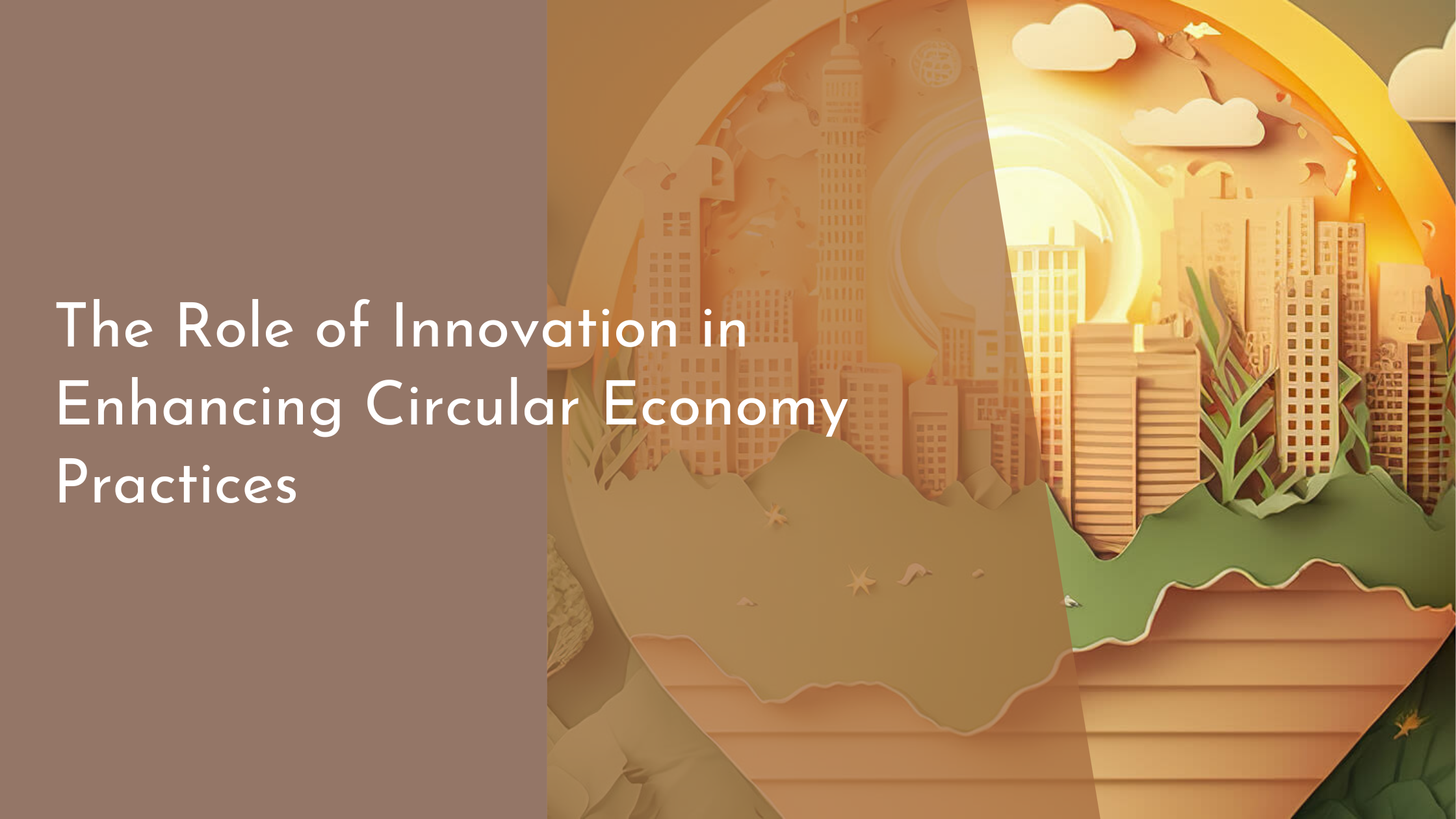The Role of Innovation in Enhancing Circular Economy Practices
In the rapidly evolving landscape of sustainable development, the circular economy has emerged as a beacon of hope for a more sustainable future. Central to this economic model is the principle of minimizing waste and making the most of available resources. Innovation plays a crucial role in enhancing these circular economy practices, driving efficiency and paving the way for a more sustainable world. This article delves into the fundamentals of the circular economy and explores how innovation is at the heart of this transformative approach.
Understanding Circular Economy Fundamentals
The circular economy is an economic model that aims to eliminate waste and promote the continual use of resources. It represents a shift away from the traditional linear economy, which follows a ‘take-make-dispose’ pattern. In a circular economy, products are designed for durability, reuse, remanufacturing, and recycling. This model not only conserves resources but also reduces environmental pollution by keeping materials in use for as long as possible. The circular economy fosters a closed-loop system where waste is minimized through sustainable design and innovative transformation processes.
At its core, the circular economy is built on three key principles: design out waste and pollution, keep products and materials in use, and regenerate natural systems. By adhering to these principles, businesses and communities can reduce their environmental impact while promoting economic growth. The circular economy also emphasizes the importance of changing consumer behavior and shifting societal attitudes toward a more sustainable way of living. Through efficient resource management and embracing innovation, the circular economy can help achieve global sustainability goals.
Innovations Driving Resource Efficiency
Innovation is a catalyst for enhancing resource efficiency within the circular economy. One of the key innovations is in the realm of product design. Companies are increasingly focusing on eco-design, creating products with longer lifespans, and making them easier to repair and recycle. This not only reduces waste but also decreases the demand for raw materials. Additionally, digital technologies such as the Internet of Things (IoT) and data analytics are being leveraged to optimize resource use and track material flows, ensuring that resources are used as efficiently as possible.
Another area where innovation is driving resource efficiency is in the development of new business models. Sharing platforms, product-as-a-service models, and reverse logistics are all gaining traction, transforming how resources are consumed and extending the lifecycle of products. These innovative models enable increased access to goods and services while reducing the need for resource-intensive production. By fostering an environment of creativity and innovation, businesses can uncover new opportunities for efficiency, ultimately contributing to the circular economy’s objectives.
Technological Advances in Waste Recycling
Technological advances are revolutionizing waste recycling processes, making them more efficient and sustainable. One notable innovation is the development of advanced sorting technologies, such as AI-powered robotic systems and optical sorters, which can accurately and quickly separate materials for recycling. These technologies enhance the quality and purity of recovered materials, ensuring they can be reused in the production of new products. As a result, recycling becomes a more viable and cost-effective option for businesses aiming to reduce their environmental footprint.
Moreover, breakthroughs in chemical recycling technologies are opening up new possibilities for processing complex and mixed-material waste streams. Unlike traditional mechanical recycling, chemical recycling breaks down materials into their fundamental components, allowing for the recovery of high-quality raw materials. This process is particularly beneficial for recycling plastics, textiles, and electronic waste, which are often difficult to process through conventional methods. By harnessing these technological advancements, the recycling industry can play a pivotal role in closing the loop within the circular economy.
Collaborative Efforts for Sustainable Solutions
Collaboration is key to implementing sustainable solutions within the circular economy. Partnerships between businesses, governments, and non-profit organizations can drive systemic change by pooling resources, expertise, and knowledge. For instance, public-private partnerships can foster innovation by funding research and development projects that focus on sustainable technologies and practices. Additionally, collaborations can lead to the creation of shared standards and guidelines that promote best practices in resource management and waste reduction.
Community-based initiatives also play a vital role in promoting circular economy practices. Local governments, businesses, and citizens can work together to establish circular hubs that encourage recycling, repair, and reuse activities. These initiatives not only raise awareness of the benefits of a circular economy but also empower communities to take action toward sustainability. By fostering a culture of collaboration and innovation, society can collectively work toward achieving a more resilient and sustainable future.
As we continue to face pressing environmental challenges, the role of innovation in enhancing circular economy practices becomes increasingly vital. Through innovative design, efficient resource use, technological advancements in recycling, and collaborative efforts, we can transition toward a more sustainable world. Embracing the circular economy not only benefits the environment but also offers economic and social advantages. By working together and fostering creativity, we can pave the way for a future where resources are used responsibly, waste is minimized, and sustainability is at the forefront of our global agenda.

